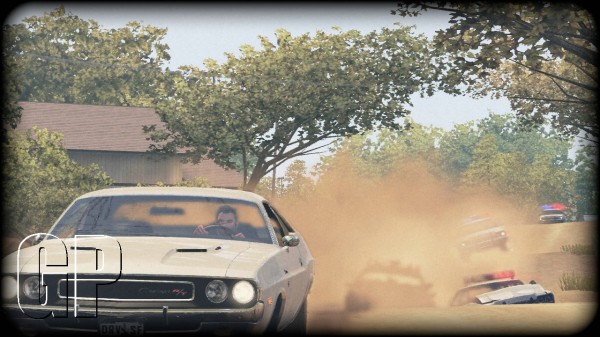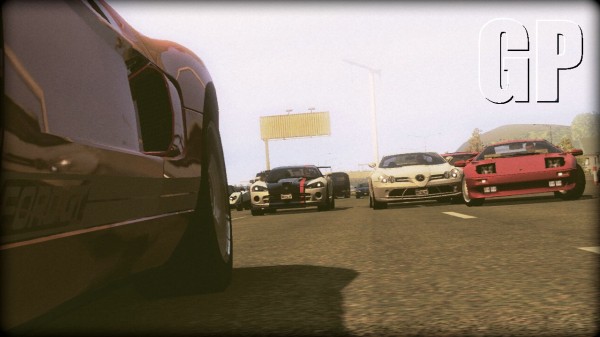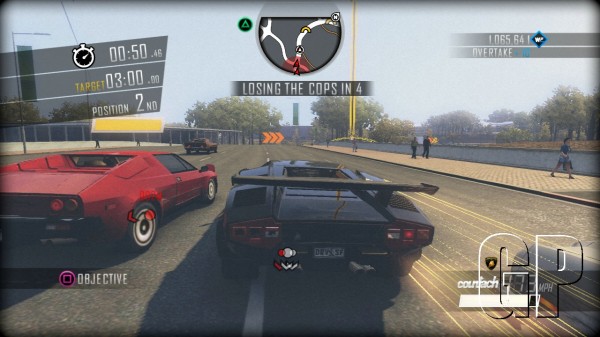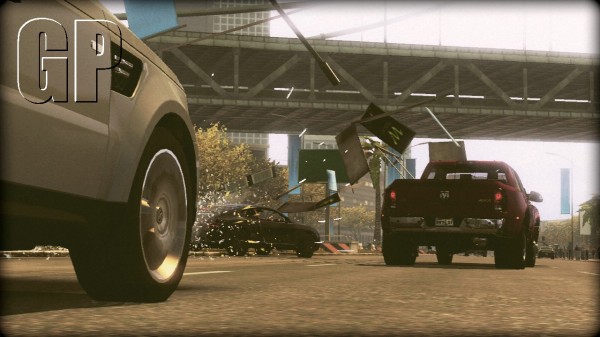Driver San Francisco is the most recent title from Reflections Games: a company that began their legacy with the original 3D crime chase simulator Driver on the PlayStation. Now, 12 years later, comes probably the finest iteration in the series since Driver 2.
It features a controversial, but surprisingly innovative concept whereby players can ‘shift’ between cars, jumping Quantum Leap-style out of the driver’s body, and into another; anywhere in the large, open city. (This often features genuinely entertaining moments where the main character drops mid-conversation into someones body, and has to enter dialogue with the passenger(s)).I thought I’d better mention this so some of what I say below actually makes sense.
Here are three reasons you should buy Driver San Francisco:
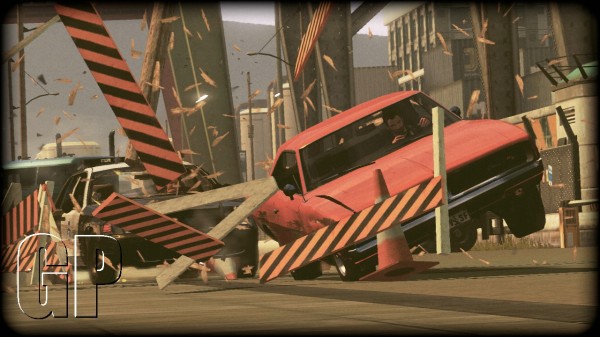
1. The best first-person driving view ever in a videogame
I’ve never played a first person perspective option in a driving game quite like this one. It’s literally the factor that drove me to buy the game. It beats Project Gotham Racing’s driver-cam, and that’s the last series I played that did it right.
In San Francisco’s third-person view, you can’t feel speed. The handling seems clunky, the velocity feels slow; and this is a factor that seems to have put off a lot of players (judging from responses on online communities and forums.) When you’re rocking 80Mph on the freeway, it feels like you’re doing, at most, 30. The controls feel oddly inaccurate, slippery like I’ve got a pair of motorcycle boots on.
Pop into FP with a press of the Back button (360 version tested), and the game becomes a whole other experience. The protagonist, Tanner’s, hands react with complete tactility to your thumbstick movements, one-to-one with what your hands would do in real life: looping over each other to turn the tightest corners, frantically spinning the wheel about when you’re in a bad spot, lifting off the wheel from shock in larger, thumping collisions.
On top of this, that granny speed feeling of 80Mph is out the window. This feels like Burnout. In the game’s default free-roam mode I still often shift into a fast car and fire down the wrong side of the freeway, weaving through oncoming traffic with swift deftness and agility, while the various vehicles whip by like so many blurs. Close calls and near misses are abound and thrilling. No matter which automobile you’re in, the handling of each car is perfectly responsive, and surprisingly unique. In FP you still always know if you’re driving a nippy Mini Cooper analogue or an 18 wheeler truck (which is fun, by the way, especially online where you can shift into one and ruin other people’s attempts at victory).
Despite it being marginally more difficult to see all around you (generally offset by a well-designed system for looking around the cockpit), the game is actually much easier, and infinitely more fun in this FP mode. It was a game changer for me.
2. A multiplayer mode that, as well as being fun, fixes a lot of issues with racing game multiplayer modes
The singleplayer in Driver: San Francisco is good. You play Tanner, who is involved in a vehicular accident with his rival Jericho at the start of the game. The rest of the game is you in his coma dream in an open-world San Francisco, doing missions helping people out with your out-of-body ability, which are often very varied and have surprising twists (this game has one of the very few examples of second-person perspective gameplay in the industry, and the instance is pulled off excellently). It’s the kind of thrilling yet heartfelt experience you might recommend to a friend who said they need help on an accident, because it captures both the chaos and the hope that can follow such an event.
However, the multiplayer is the real star of the game for me. The game features an open-world lobby, like Red Dead Redemption and Grand Theft Auto IV and more aptly Burnout: Paradise, whereby you can drive around in the city at your leisure in whatever car you like, and others can join you in the city and also drive around. This leads to fun games of cat and mouse and chases and races that you improvise yourself.
Drop into the matchmaking system, and you’ll be slid into a party with up to 7 other people. The process moves this way: a qualifying round, which features one mini-game-esque match where players compete to get points by doing a basic action (driving as fast as possible for as long as possible, getting the most airtime possible, overtaking AI civilian vehicles), which dictates what grid positions the players will start in. After this, the game begins.
The actual multiplayer gametypes are one of the greatest joys to be had in Driver: San Francisco. My personal favourite is Trailblazer, in which the players must chase an invincible shiny gold DeLorean DMC-12, getting points for following in the tyre trails of the car’s wheels, which track along for 30 feet behind it. Players are immediately plunged into a ram-of-war battle, up to eight cars following one golden car, vying for its backdraft, all 9 vehicles weaving through traffic and sliding round corners; crashes, near misses, high-speed chasing, everything you want from a driving game. A grim pleasure is gained whenever a ‘total newb’ tries to get in front of, and hinder the DeLorean, and you watch for the umteenth time as the person is crushed apart and their car is sent flying.
On top of the overall experience, no matter what game mode, is Shifting. In a way, Shifting comes into its own in Driver: SF’s online modes. And gave me the most refreshing online driving experience I’ve ever had.
Don’t you just hate it when, in an online racing game, you, on the last lap, bop into one corner out of sheer bad luck, and as you frantically try to recover, the other racers rapidly overtake you, and in moments you go from 1st place to 10th? Shifting completely removes this frustration in D:SF. With the ability to shift into cars around the 1st place position constantly, you literally never fall behind. Once a player lags about 50 yards behind the poll positions, they shift up front and try to keep pace.
There is no more separation of the players, no more “the best stay on top and everyone else falls laps behind”. Everyone can stay up there. And better: everyone can sabotage the top player if they realise they don’t have what it takes. Screw GTAIV racing’s ability to get out your car and RPG folk. In D:SF you simply Shift into a fuel truck a couple of corners ahead, brake, and turn it so it’s blocking the path. Chaos ensues. Crashes, swearing, rapid steering, horns tooting, smoke and debris fill your vision; and whoever’s in first place will be decidedly usurped, one way or another.
Absolutely the most thrilling racing and driving multiplayer I’ve ever played. In its own visceral, dirty trick manner. At times the game matches, and occasionally exceeds NFS: Hot Pursuit in its chases and thrills (singleplayer as well as multiplayer).
3. The seriously entertaining game world, as in, the structure and events of Tanner’s coma dream
To progress through the story you have to jump into Tanner’s body in his iconic yellow black-striped car, and take on a mission trying to pin Jericho down. However, Tanner is kicked out of his body until he helps out enough people across the city. You, the player, have to jump into various citizens’ bodies, and help them out in story side-missions.
The variety in these is incredible. In one series of side-missions, you play a father/daughter street racing team, who each drive their own cars. In these levels you have to have both cars occupy 1st and 2nd positions in the race, Shifting rapidly between the two cars in a racing-juggle to win the event. Other events see you hopping into oncoming cars to head-on-collide with fleeing criminals, or playing a Speed-style round where you control a school bus that will explode if its speed falls under 40Mph.
More impressive is how well integrated these missions are with the gameworld. To begin one you have to Shift into the car of the Mission in question; Tanner listening to their dialogue in dilemma then Quantum Leaping in to take over and save the day with his driving prowess. Even while simply driving around for fun there are a few clever mechanics threaded into Free Roam: if you bump into a police car while in a civilian vehicle, you start a police chase, and gain lots of Willpower Points (basically experience points used to upgrade and unlock abilities, vehicles, challenges) if you escape the cops quick enough. Or you can bump into a police car, begin a getaway chase, then Shift into the policecar you just bumped, and chase yourself for a bit of fun. Brilliant mind-bending improvisation.
The missions in Tanner’s shoes are where the game makes some seriously innovative gameplay and narrative jumps, the player experiencing coma-nightmares, counter-powers, and decently-scripted action scenes.
A Few Problems.
Having said that, the story itself is relatively weak. It’s very kitsch, trying to capture the sense of a day-time TV cop thriller: and it does so perfectly. The mystery is pretty lame and the adventure is mediocre compared to the actual disjointed gameplay missions, though there are a few great cinematic moments later and some good dialogue you’ll want to stick around for.
Sometimes the game tries a little to hard to be a faux TV show (or something, it’s not entirely clear). Alan Wake or Alone in the Dark 5-style “Previously On”’s are arbitrary and redundant. At the end of chapters, players are given random scenes of Tanner driving around, that mix FMV and in-engine footage. The mixing is a cool trick, but often pointless, showing scenes of bluntly mundane driving for no reason, often with filler dialogue. Story cutscenes pull this off marginally better.
Also, while the game engine runs at a fantastic 60Fps at nearly all times in singleplayer, the engine has a few oddities. It’s designed to be able to load the whole city at a moment’s notice as the player pulls back into bird’s-eye view while Shifting, and also has great driving physics: but general physics seem left by the wayside. The result of a head-on collision between a truck and a sports car, both going over 80Mph, in Driver: SF, is akin to a dry, silent fart. Crashes feel like nothing, and while the damage model isn’t bad (you know if a car is on its last legs), there’s no satisfaction or good feedback from damage that games like Burnout or GTAIV capture so well.
Overall though, Driver: San Francisco is well worth your attention if you have a remote interest in: driving, racing, helmet-cams, great car chases, online multiplayer for funsies not competition, stories that don’t take themselves seriously, witty dialogue, protagonists who sound like Seth MacFarlane, the Driver franchise, or BBC’s Life On Mars.

